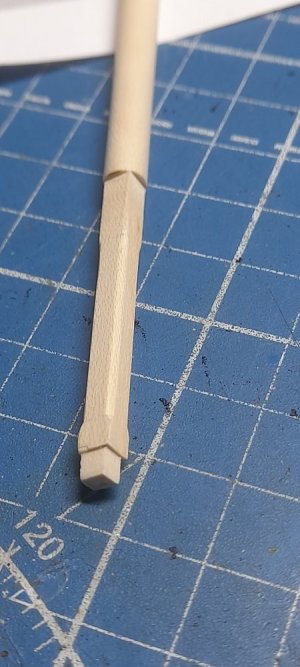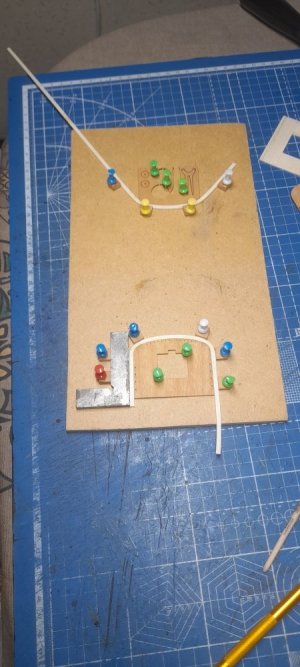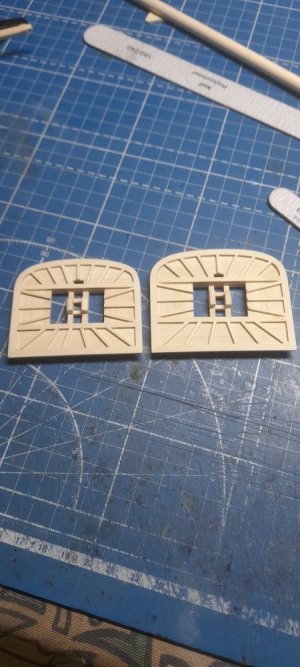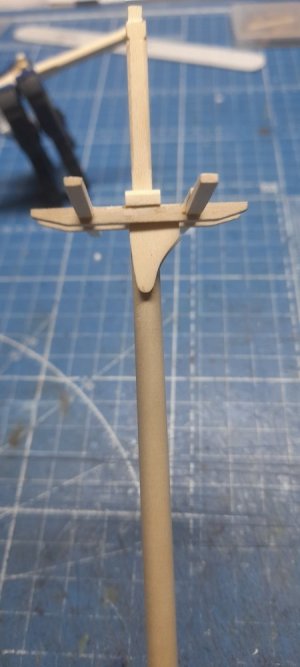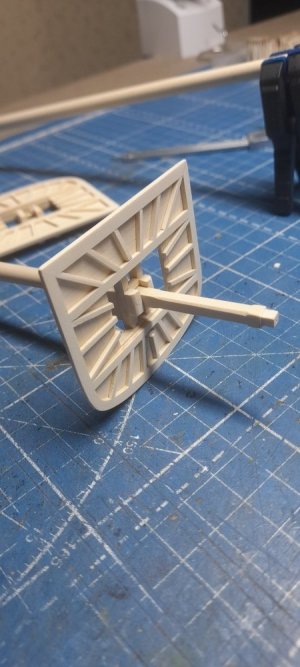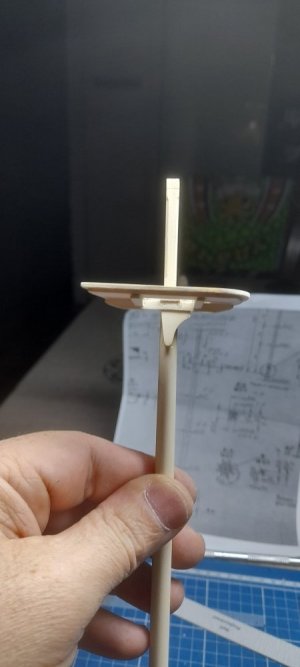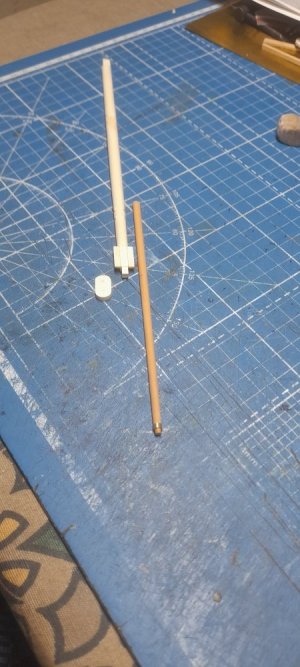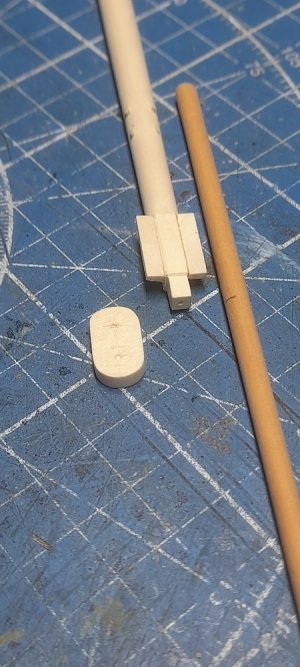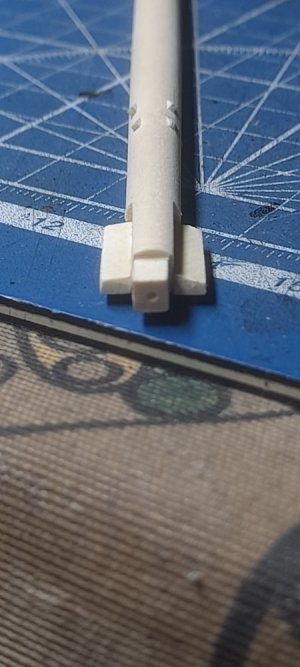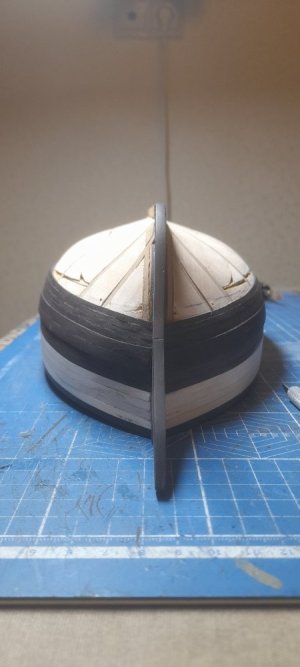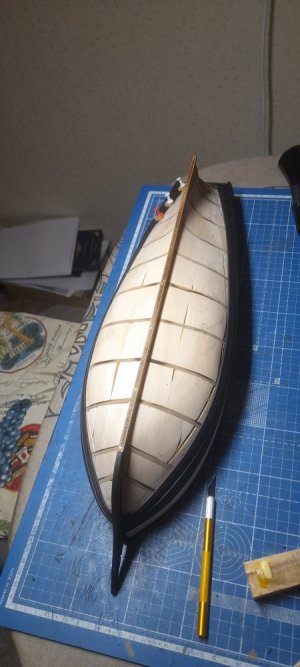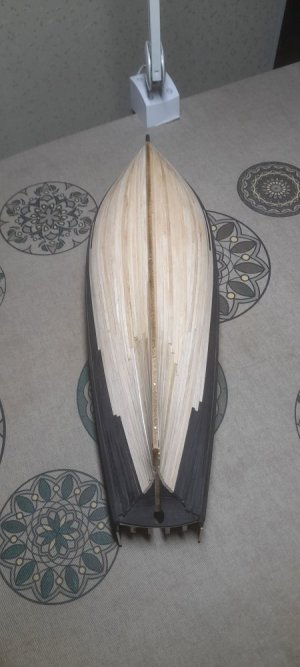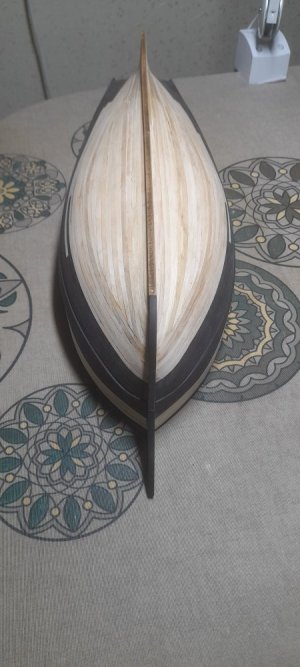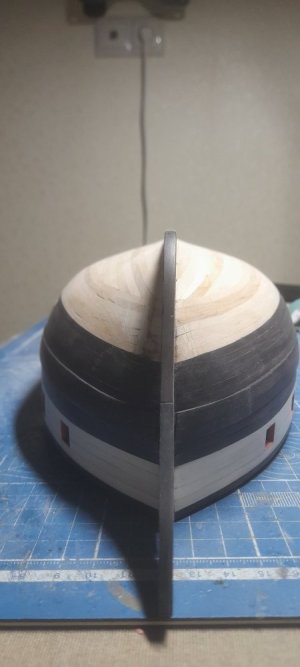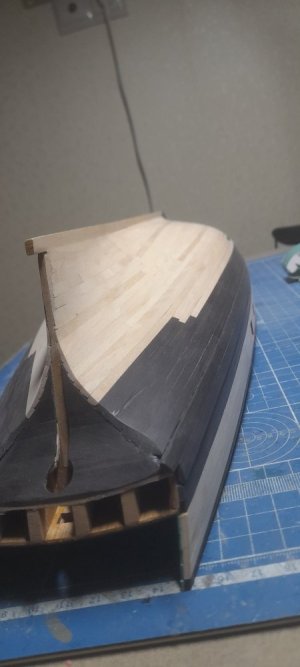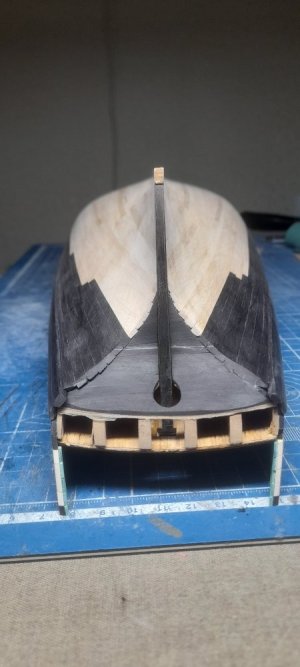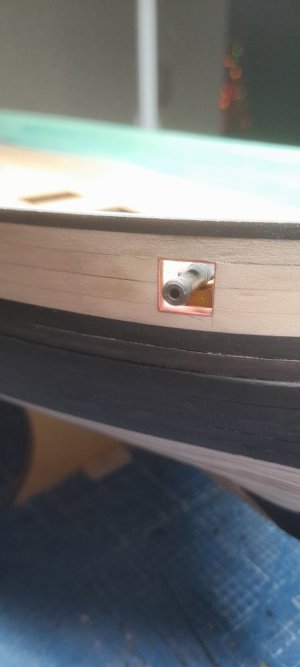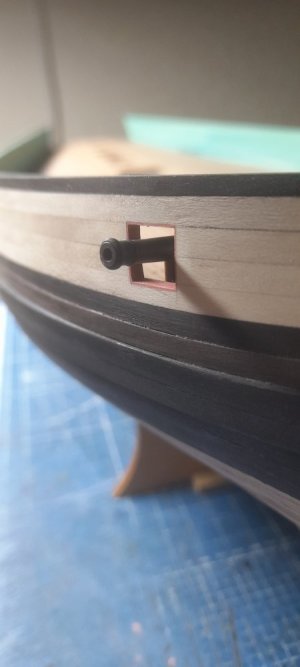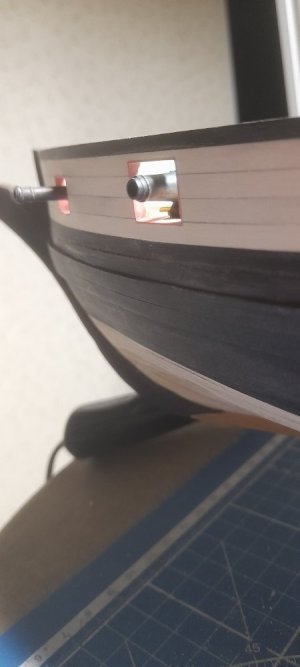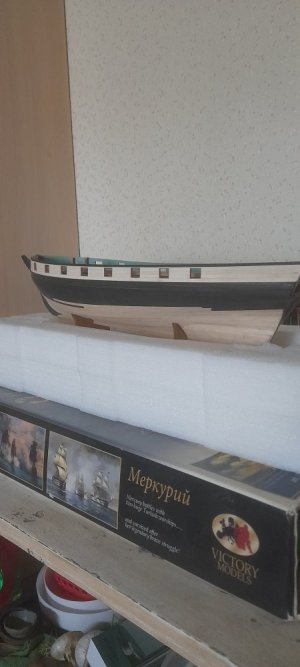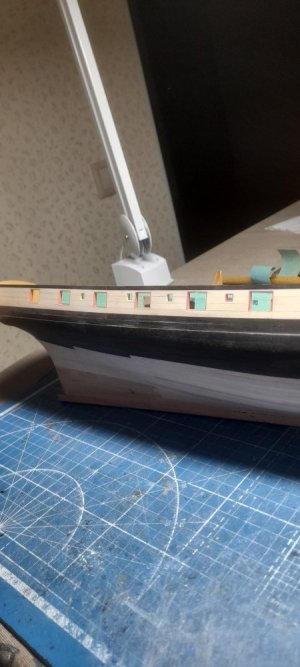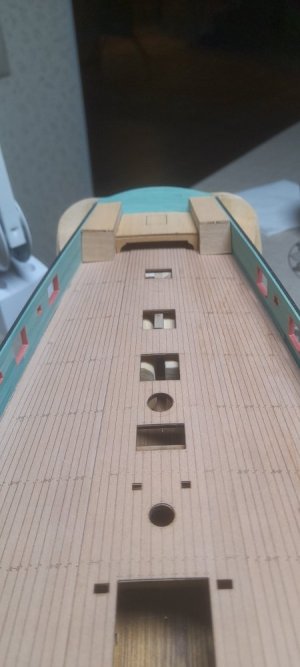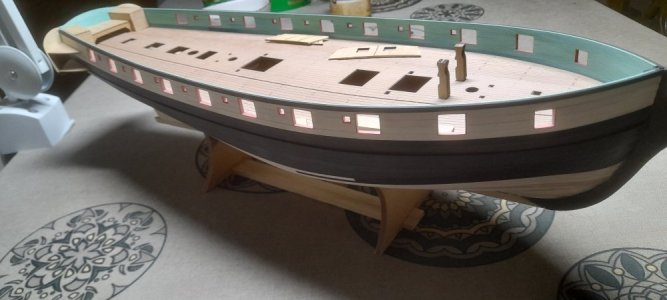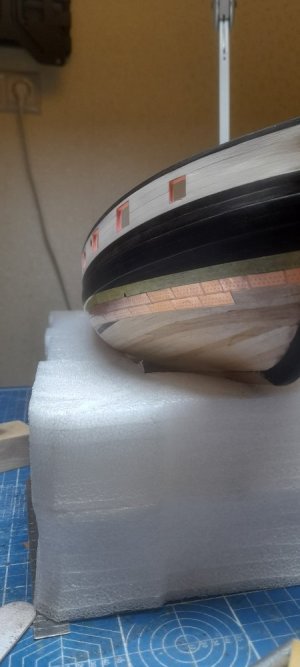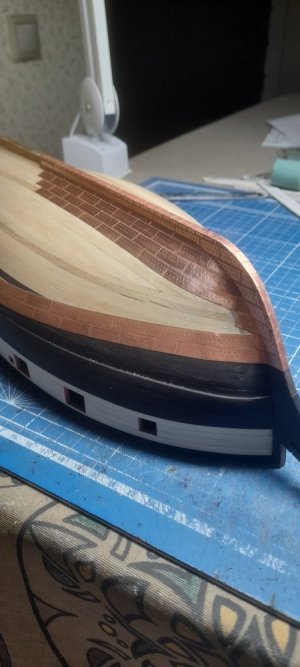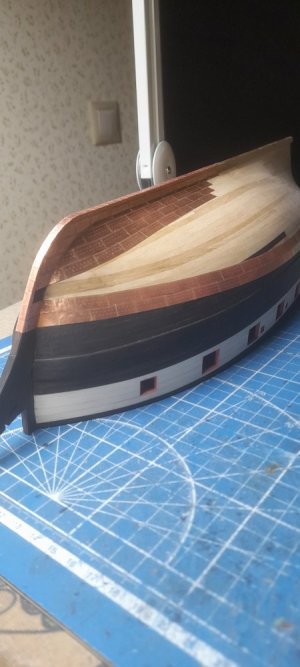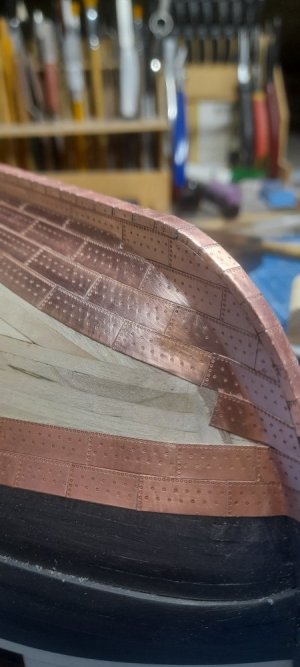Stulzes = quarter galleries
-

Win a Free Custom Engraved Brass Coin!!!
As a way to introduce our brass coins to the community, we will raffle off a free coin during the month of August. Follow link ABOVE for instructions for entering.
You are using an out of date browser. It may not display this or other websites correctly.
You should upgrade or use an alternative browser.
You should upgrade or use an alternative browser.
Brig "Mercury" from Amati, scale 1:64
- Thread starter Alexander74
- Start date
- Watchers 16
Thank you HeinrichIt already looks like a totally different ship, Sasha. Beautiful planking with the ebony wood.
Hello everyone. Continuation of the construction of the brig Mercury. I finished cutting the gun ports, started on the oar ports. The size of the oar port in my scale is 4x4.5 mm. I cut out a block of red hornbeam with a small margin for processing. We mark the place for the portico, drill a hole. Using needle files, we make a rectangle in the side. We insert the rectangle, sand it on both sides of the side, drill a hole again and process it from the inside to a rectangle. This is what we get.
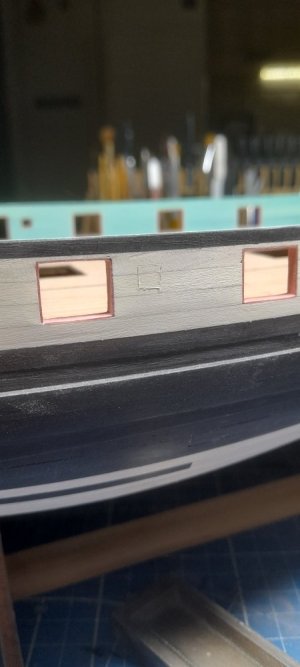
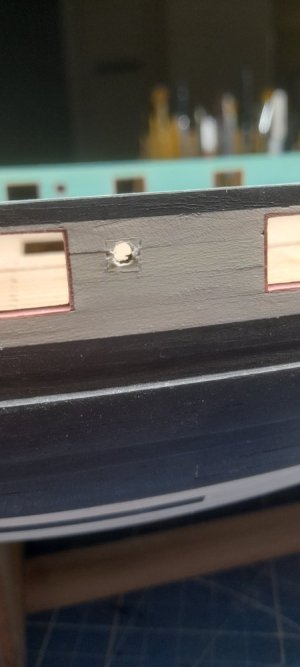
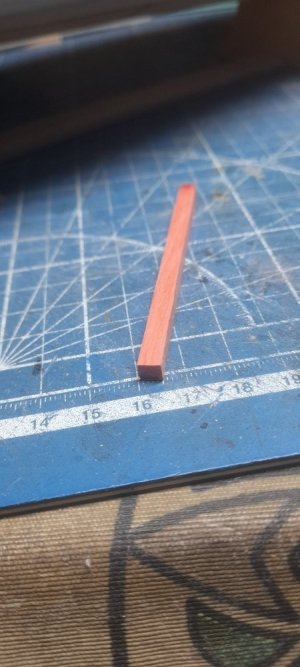

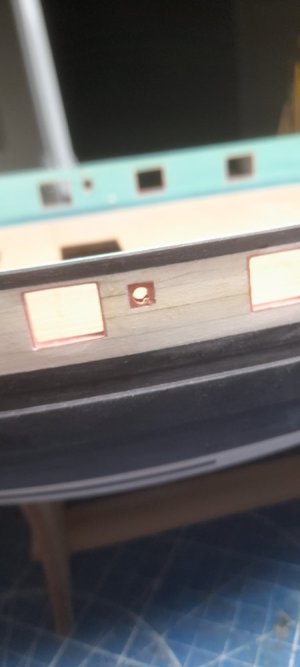







Looks beautiful. Forgive me for asking, but should not the plates overlap slightly?
It will look too rough and out of scale.should not the plates overlap slightly?
They should, but it is impossible to implement it on a large scale. Therefore, only in a butt jointLooks beautiful. Forgive me for asking, but should not the plates overlap slightly?
In addition, the etching on the plates itself imitates overlap. The main thing is not to leave gaps between the copper sheets.
- Joined
- Oct 17, 2020
- Messages
- 1,687
- Points
- 488

Tutto, secondo me, dipende 1) dalla scala e 2) dall'abilità del modellista.Ciao, scusatemi, tutte queste ore di ricerca e di prova del colore che senso ha se fate così tanti compromessi? Frank
I love how your coppering of the false keel is done rather than running up to the keel itself. Nicely done. FWIW, the coppering was always started at the water line and then worked down towards the keel so the overlap (or in our case, the simulation) was lower rows on top of the upper rows, opposite of roof shingles.
Your oar ports are very neatly done. Do you have problems with tear out drilling such a large hole versus a series of tiny holes around the periphery before filing the border?
Allan
Your oar ports are very neatly done. Do you have problems with tear out drilling such a large hole versus a series of tiny holes around the periphery before filing the border?
Allan
Allan, there are many ways of copper sheathing and they are all different. For large ships of the frigate type and above, the sheathing was laid in one way, for schooners and brigs in another. In my country, on various forums, "more than one spear has been broken" on this matter. I sheathed the brig Mercury like the schooner I was assembling. The sheets are arranged like scales on a fish - from the bottom up and from the bow to the stern. Due to the fact that there is no overlap of the sheets, this is not difficult to do. It is more difficult to bend the copper sheets. In the photo you can see that they are not cut, but bent to the shape of the hull. I did not have any problems with leveling the surface. I made the vertical using a square 90 degrees relative to the waterline, the horizontal parallel to the deck.I love how your coppering of the false keel is done rather than running up to the keel itself. Nicely done. FWIW, the coppering was always started at the water line and then worked down towards the keel so the overlap (or in our case, the simulation) was lower rows on top of the upper rows, opposite of roof shingles.
Your oar ports are very neatly done. Do you have problems with tear out drilling such a large hole versus a series of tiny holes around the periphery before filing the border?
Allan
Hi Alexander,there are many ways of copper sheathing and they are all different.
Thank you for that information.
Thank you very much.
Allan
- Joined
- Oct 17, 2020
- Messages
- 1,687
- Points
- 488

of what I know, the suppraposition is not only vertically but also in the horizontal direction from the middle of the ship to the bow and vice versa to the stern.FrankAllan, there are many ways of copper sheathing and they are all different. For large ships of the frigate type and above, the sheathing was laid in one way, for schooners and brigs in another. In my country, on various forums, "more than one spear has been broken" on this matter. I sheathed the brig Mercury like the schooner I was assembling. The sheets are arranged like scales on a fish - from the bottom up and from the bow to the stern. Due to the fact that there is no overlap of the sheets, this is not difficult to do. It is more difficult to bend the copper sheets. In the photo you can see that they are not cut, but bent to the shape of the hull. I did not have any problems with leveling the surface. I made the vertical using a square 90 degrees relative to the waterline, the horizontal parallel to the deck.


